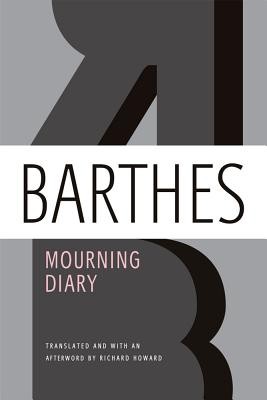
- Išsiųsime per 10–14 d.d.
- Autorius: Roland Barthes
- Leidėjas: HILL & WANG
- ISBN-10: 0374533113
- ISBN-13: 9780374533113
- Formatas: 13.7 x 20.8 x 2 cm, minkšti viršeliai
- Kalba: Anglų
- Extra -15 % nuolaida šiai knygai su kodu: ENG15
Atsiliepimai
Aprašymas
In the sentence 'She's no longer suffering, ' to what, to whom does 'she' refer? What does that present tense mean? --Roland Barthes, from his diary
The day after his mother's death in October 1977, Roland Barthes began a diary of mourning. For nearly two years, the legendary French theorist wrote about a solitude new to him; about the ebb and flow of sadness; about the slow pace of mourning, and life reclaimed through writing. Named a Top 10 Book of 2010 by The New York Times and one of the Best Books of 2010 by Slate and The Times Literary Supplement, Mourning Diary is a major discovery in Roland Barthes's work: a skeleton key to the themes he tackled throughout his life, as well as a unique study of grief--intimate, deeply moving, and universal.EXTRA 15 % nuolaida su kodu: ENG15
Akcija baigiasi už 6d.23:23:08
Nuolaidos kodas galioja perkant nuo 10 €. Nuolaidos nesumuojamos.

- Autorius: Roland Barthes
- Leidėjas: HILL & WANG
- ISBN-10: 0374533113
- ISBN-13: 9780374533113
- Formatas: 13.7 x 20.8 x 2 cm, minkšti viršeliai
- Kalba: Anglų
In the sentence 'She's no longer suffering, ' to what, to whom does 'she' refer? What does that present tense mean? --Roland Barthes, from his diary
The day after his mother's death in October 1977, Roland Barthes began a diary of mourning. For nearly two years, the legendary French theorist wrote about a solitude new to him; about the ebb and flow of sadness; about the slow pace of mourning, and life reclaimed through writing. Named a Top 10 Book of 2010 by The New York Times and one of the Best Books of 2010 by Slate and The Times Literary Supplement, Mourning Diary is a major discovery in Roland Barthes's work: a skeleton key to the themes he tackled throughout his life, as well as a unique study of grief--intimate, deeply moving, and universal.



Atsiliepimai